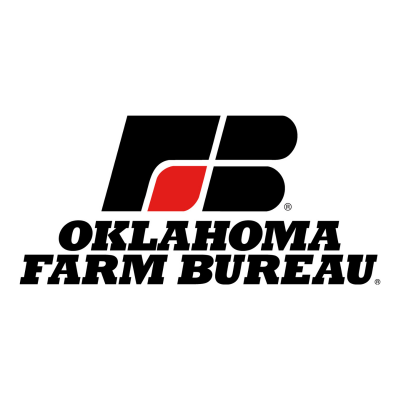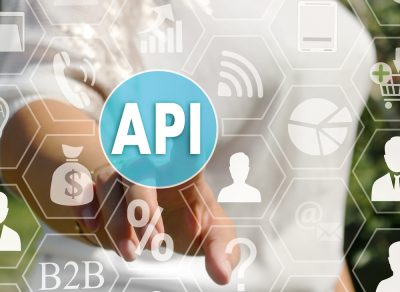How insurance companies should protect their digital systems from security breaches
It’s crucial for insurers and their partners to stay vigilant against constantly evolving cyber threats and collaborate to reduce cybersecurity risks in the ecosystem.
The insurance industry relies heavily on digital ecosystems involving multiple stakeholders. A survey found that 84% of insurance executives view these ecosystems as a vital part of their business strategy. By 2025, it is predicted that these ecosystems will generate around 30% of the world’s insurance revenue, according to McKinsey.
Ecosystems present Insurers with growth opportunities, but these opportunities also come with complex and challenging cybersecurity risks.
According to Gartner, the insurance industry’s digital ecosystems are at a greater risk of cyberattacks as the global number of active IoT devices reaches 123 billion. Enterprise web applications are expected to experience a surge in data breaches caused by API attacks, making it the most common form of attack vector by the end of 2022.
In a digital environment, there are several common cybersecurity issues that can occur, including:
- A lack of control and visibility makes it challenging to manage and monitor assets and application components in the cloud.
- The use of microservices in digital ecosystems has the potential to improve access for users both within and outside the organization.
- In microservices architectures, the data is frequently moved, modified, and accessed. This means data breaches can happen even if the communication channel is not exposed, and hackers can exploit weaknesses.
How insurers can protect their digital systems:
Collaborative approach required: Ecosystem partners need to revamp security measures and foster teamwork
Insurance companies must collaborate with their partners, third-party vendors, and even their competitors to combat cybercriminals, who often work together for success. To enhance their resilience, businesses need to review their security strategy to protect themselves, their network, and their partners.
To ensure open-source security, software developers and security teams must voluntarily collaborate. They should keep track of any cybersecurity incidents and dangers they come across and share that information transparently with each other. This includes the knowledge they gain, allowing them to identify and tackle threats effectively.
Insurers and vendors can improve their security by sharing their tools through open-source software. This allows them to receive feedback and offer their own protection to others while working together to establish a unified defense for their networks.
Embrace early detection: A wise investment
In an open-source digital ecosystem, it’s important to detect cybersecurity breaches early on. These attacks can cause a considerable amount of damage if they go unnoticed for weeks. It’s crucial to respond quickly and efficiently to identify the source of the breach, the affected systems, and the extent of the damage. Doing so will help neutralize the threat before it can cause any severe harm.
SIEM software helps companies proactively detect and mitigate security threats on their network to prevent disruptions to business operations.
By collecting and analyzing data as soon as it is captured from applications, cloud environments, and networks, security, and IT teams can automatically manage event logs and network flow data in a single location.
Implementing zero-trust security: Treating everyone as a potential threat
Zero-trust architecture is a security approach that assumes that every connection and endpoint could pose a threat to an organization’s assets, data, applications, and services. This means that both internal and external sources are considered potential threats, and all connections are secured, even those already established within the organization.
Currently, approximately 60% of organizations in North America are working on zero-trust projects. Meanwhile, around 50% of companies in the insurance and finance industries have identified zero-trust security models as a high-priority area for their businesses.
Furthermore, the security model evaluates whether the connection complies with the security policies and protocols of the organization. By enforcing access restrictions, users are limited to accessing only the necessary information and are unable to access any additional data.
Implementing and maintaining a zero-trust security approach may be difficult for insurance companies that still rely on outdated technology. This method demands continual real-time authentication and verification to regulate user access. However, antiquated software may lack the necessary authentication, validation, and monitoring capabilities, which can impede the rollout of this security strategy.
Enhance security with robust authentication protocols
It is recommended that insurance companies utilize technology such as Privileged Access Management (PAM) SaaS to establish a zero-trust security approach. This can help reduce the number of entry points for cyber attackers and minimize the extent of damage caused by both internal and external attacks.
To access the system, users with special permissions need to have their credentials checked and are limited in what they can do. The security tools of the system utilize automation and user-friendly options to establish programs for privileged entry and a security framework based on zero trust.
Data segmentation
To protect customer and company information and resources, it is crucial to segment data. This means limiting access to data and allowing users to access it only when necessary and appropriate.
Studying how people use network servers can make it easier to see what’s happening and improve security in a digital environment.
One way to protect resources is by using distributed resource protection mechanisms (DRPM). This verifies client or partner profiles and only grants capability tokens to those who meet the criteria.
To control a user’s access to resources, it is crucial to implement time limits and issue tokens that expire quickly. As the user becomes more reliable, the validity of their token can be expanded over time by the provider of the resources.
Regularly conduct stress tests
A stress test is a method used to evaluate the ability of your application, system, or software to withstand extreme conditions. The objective is to detect any weaknesses, enabling you to reinforce security measures before cyber attackers make attempts to exploit them and break into your organization’s or partner’s network.
IBM’s study found that organizations that have incident response teams and tested response plans experience data breaches that cost $2.46 million less than those without such measures in place.
Insurers have various methods to conduct stress tests.
To identify vulnerabilities in their computer systems and networks, some companies opt to hire external investigators. First American Bank, for example, spends about $10,000 annually on these investigations to infiltrate their network systems.
To effectively test security measures and evaluate your team’s response to a major cyber threat, simulating a real-world scenario is the best approach.
Ecosystem partner evaluation: A comprehensive approach
Accenture’s report shows that while 97% of insurance companies believe they have the necessary qualities to be a desirable ecosystem partner, only 26% of those insurers feel that their ecosystem partners are equally committed to enhancing their security resilience.
Insurance companies need to perform a security assessment or audit before adding new partners to their systems.
Insurance companies are depending on third-party vendors such as cloud service providers and software-as-a-service to grow their digital operations. To safeguard their data, it is crucial for them to select vendors who possess strong data handling strategies and excellent cybersecurity credentials.
Find Service Organization Control 2 (SOC 2) certification
The SOC 2 certification is a report that confirms that service providers adhere to specific standards for managing customer data. It involves an auditing process created by the American Institute of CPAs (AICPA) and is widely used in the industry to evaluate internal controls.
To obtain SOC 2 certification, a vendor must undergo a rigorous audit that verifies their compliance with IT security standards. The audit assesses the efficiency of their data security policies and systems, processing accuracy, confidentiality, and protection of customer information.
LenderDock itself is SOC 2 certified and has put in place monitoring of the health of these systems by automating most areas and has a dedicated team that oversees the performance.
In other words, your data is secure, and your process is simplified using LenderDock’s services.
Take immediate action!
Although there is a risk involved in providing vendors with access to customer data, transaction information, and digital assets, the benefits of these systems guarantee their continued use.
It’s important for insurers and their partners to stay updated on the most recent cyber threats and work together to decrease the risks of cybersecurity in the system. Taking prompt action is crucial.











